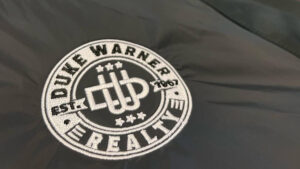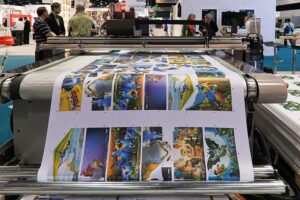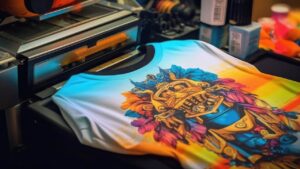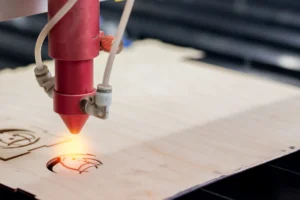Frequently Asked Questions
Where to buy direct to film transfers?
Direct to film transfers can be purchased from Custom 101 Prints, where you can explore our range of high-quality printing services tailored for apparel and promotional items.
What is direct to film?
Direct to film (DTF) is a printing method that transfers designs onto garments using a film as an intermediary, allowing for vibrant colors and detailed images on various fabrics. This technique is ideal for custom apparel and promotional items.
What is a print shop?
A print shop is a business that specializes in producing printed materials, including custom apparel and promotional items, using various printing techniques to meet customer needs efficiently and with high quality.
What is direct to film printing?
Direct to film printing is a method that transfers designs onto a special film, which is then heat-pressed onto the fabric. This technique allows for vibrant colors and intricate details, making it ideal for custom apparel.
What is a direct to film transfer?
A direct to film transfer is a printing method that involves printing designs onto a special film, which is then transferred onto fabric using heat and pressure. This technique allows for vibrant colors and intricate details on various apparel.
What materials are used for direct to film?
The materials used for direct to film printing include high-quality transfer films, specialized inks, and adhesive powders. These components work together to ensure vibrant colors and durability on various fabrics.
How does direct to film printing work?
Direct to film printing works by printing designs onto a special film, which is then transferred onto the fabric using heat and pressure. This method allows for vibrant colors and intricate details, making it ideal for custom apparel.
What are the benefits of direct to film?
The benefits of direct to film (DTF) printing include vibrant colors, high detail, and versatility on various fabrics. It allows for quick production times and is ideal for both small and large runs, making it a popular choice for custom apparel.
Where can I find direct to film services?
Direct to film services can be found at Custom 101 Prints, a New York-based printing service specializing in high-quality custom printing. Visit our website to explore our offerings and request a quote for your project.
What is the cost of direct to film transfers?
The cost of direct to film transfers varies based on factors such as quantity, size, and design complexity. For accurate pricing, please request a quote through our website or contact our customer service team.
How to choose a print shop for transfers?
Choosing a print shop for transfers involves considering quality, turnaround time, pricing, and customer service. Look for a shop with a strong portfolio, positive reviews, and a user-friendly design process to ensure your project meets your expectations.
What types of prints can a print shop create?
Print shops can create a variety of prints including screen printing, embroidery, direct-to-garment printing, and promotional items, catering to apparel and custom designs for businesses, events, and individuals.
How to prepare files for direct to film printing?
Preparing files for direct to film printing involves ensuring your artwork is in a high-resolution format (300 DPI), using CMYK color mode, and saving it as a transparent PNG or TIFF file.
What is the process of direct to film transfers?
The process of direct to film transfers involves printing a design onto a special film, which is then applied to the desired material using heat and pressure. This method ensures vibrant colors and intricate details in the final product.
How long does direct to film printing take?
The duration of direct to film printing typically ranges from a few hours to a couple of days, depending on the complexity of the design and the volume of the order.
What equipment is needed for direct to film?
The equipment needed for direct to film printing includes a direct-to-film printer, heat press, film transfer sheets, and a computer with design software to create and prepare your artwork.
Can I use direct to film for dark fabrics?
Direct to film printing can be used on dark fabrics, but it requires a special white ink layer to ensure vibrant colors and clear designs. This technique effectively allows for high-quality prints on darker materials.
What is the difference between direct to film and screen printing?
The difference between direct to film and screen printing lies in their processes and applications. Direct to film printing transfers designs directly onto a film, allowing for intricate details and vibrant colors, while screen printing uses stencils and ink layers, making it ideal for larger runs and simpler designs.
How to maintain quality in direct to film prints?
Maintaining quality in direct to film prints involves using high-quality films, ensuring proper printer calibration, and selecting the right ink. Additionally, proper storage and handling of prints will help preserve their vibrancy and durability.
What are common issues with direct to film printing?
Common issues with direct to film printing include poor adhesion, color fading, and misalignment of designs, which can affect the overall quality of the printed product. Proper preparation and equipment maintenance can help mitigate these problems.
How to find a reliable print shop nearby?
Finding a reliable print shop nearby involves researching local options, reading customer reviews, and checking their portfolio for quality. Additionally, consider visiting the shop to discuss your needs and assess their customer service firsthand.
What services do print shops typically offer?
Print shops typically offer a range of services including screen printing, embroidery, direct-to-garment printing, and large format printing. They also provide design assistance, promotional products, and personalized items for businesses and events.
How to evaluate a print shops quality?
Evaluating a print shop's quality involves assessing their portfolio, reading customer reviews, checking for certifications, and inquiring about their printing techniques and materials used. High-quality prints should have vibrant colors, sharp details, and durability.
What is the lifespan of direct to film prints?
The lifespan of direct to film prints is typically around 3 to 5 years, depending on factors such as care, exposure to sunlight, and washing methods. Proper maintenance can help extend the vibrancy and durability of the prints.
How to troubleshoot direct to film printing problems?
Troubleshooting direct to film printing problems involves checking the printer settings, ensuring proper film alignment, and verifying ink quality. Additionally, inspect the film for any defects and clean the print head to enhance print quality.
What is the best software for print shop design?
The best software for print shop design includes Adobe Illustrator for vector graphics, CorelDRAW for user-friendly design, and Canva for quick layouts. These tools offer essential features for creating high-quality prints efficiently.
How to market a print shop effectively?
Effectively marketing a print shop involves leveraging social media, showcasing high-quality visuals of your products, offering promotions, and engaging with local businesses and events to build strong community relationships.
What are the latest trends in direct to film printing?
The latest trends in direct to film printing include advancements in eco-friendly inks, increased adoption of automation for faster production, and enhanced color vibrancy, allowing for high-quality, intricate designs on various fabrics.
How to ensure color accuracy in direct to film?
Ensuring color accuracy in direct to film involves using calibrated monitors, selecting the right color profiles, and performing test prints. This process helps achieve the desired colors in the final product, maintaining consistency and quality.
What are customer reviews saying about local print shops?
Customer reviews about local print shops often highlight the quality of products, fast turnaround times, and excellent customer service. Many customers appreciate personalized service and the ability to collaborate on custom designs, making these shops a preferred choice for printing needs.





